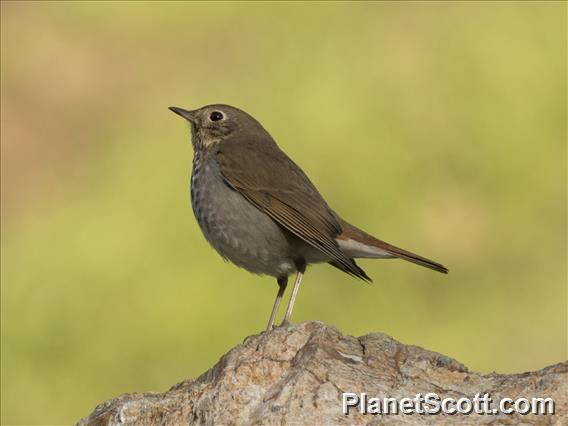Hermit Thrush (Catharus guttatus)

Hermit Thrush (Catharus guttatus)
×


Hermit Thrush (Catharus guttatus)
About Hermit Thrush (Catharus guttatus)
- Kingdom: Animals
- Phylum: Chordates
- Class: Birds
- Order: Perching Birds
- Family: Thrushes and Allies
The hermit thrush is a medium-sized North American thrush.
Source: Wikipedia
Visits
-
2004-06-20
Gwaai Haanas National Park, Canada -
2006-02-16
Lake Merced , United States of America -
2007-01-01
Golden Gate Park - Lily Pond, United States of America -
2007-01-14
Ano Nuevo State Park, United States of America -
2009-11-07
Pinnacles National Monument, United States of America -
2010-02-16
El Rosario, Mexico -
-
2010-05-27
Kenai Peninsula, United States of America -
2011-03-02
Mission - My Backyard, United States of America -
2012-12-16
Lake Merced , United States of America -
2013-03-23
Coyote Point County Park--harbor and marsh, United States of America -
-
2013-10-05
Corona Heights, United States of America -
2013-10-12
Redwood Valley, United States of America -
2013-12-07
Golden Gate Park - San Francisco Botanical Garden, United States of America -
2014-02-16
Golden Gate Park - San Francisco Botanical Garden, United States of America -
2014-05-10
Cave Creek Canyon--South Fork, United States of America -
2014-05-11
Miller Canyon, United States of America -
2014-07-21
Kenai Peninsula, United States of America -
2014-09-27
Mount Davidson, United States of America -
2014-12-08
Golden Gate Park - San Francisco Botanical Garden, United States of America -
2014-12-28
Glen Canyon Park, United States of America -
2015-01-04
Panoche Valley, United States of America -
-
-
-
-
-
-
-
-
-
-
-
-
-
-
-
-
-
-
-
-
-




